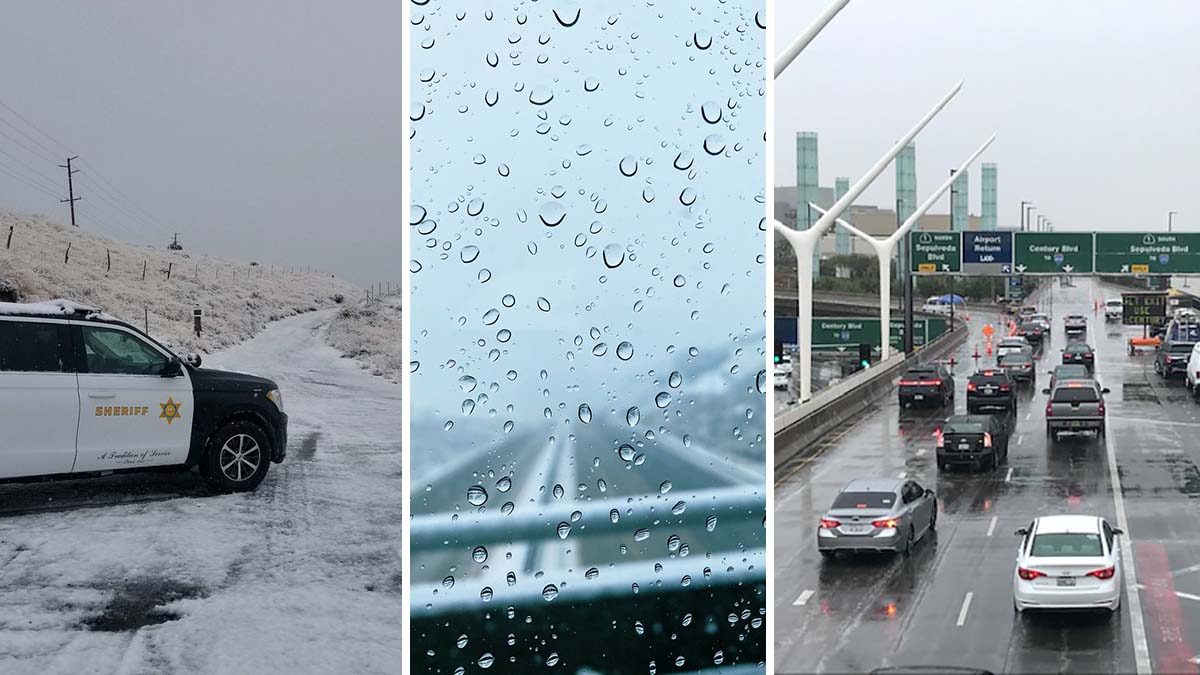Another storm is heading into southern California, bringing with it another round of wet weather.
Southern California has experienced constant winter storms that have caused a significant amount of rain, snow and damage. The first three months of the year have already exceeded average rainfall.
The next storm is expected Tuesday and Wednesday with moderate to locally heavy rain.
The rain will be light Tuesday morning, becoming heavier as the day progresses towards lunchtime. The heaviest rain will fall Tuesday evening through early Wednesday morning.
By Wednesday afternoon the storm will move away from the area leaving a dry night and rest of the week.
It will be a warm atmosphere river storm, which means there will be a lot more rain than typical winter storms.
The coast and valleys can expect between two and four inches of rain, while the mountains and foothills will see between three and five inches.
Wind gusts will also be strong and can reach up to 60 mph in desert and mountainous areas.
Some potential impacts of the storm:
- Travel delays due to flooded roads and landslides/rockfalls
- Shallow streams of mud and debris
- Overflow of streams, streams and river floods
- Downed trees / power lines and blackouts
recent storms
Just a few weeks ago, mountainous regions saw more than two meters of snow and hundreds of residents were trapped in their homes due to road closures and dangerous conditions.
Mountain crews in San Bernardino County are still working to clear some of these roads, but continued snowfall is making their job difficult.
The LADWP worked around the clock to restore electricity to thousands of residents as high winds and rains caused power lines to fail.
The heavy rains also wreaked havoc on the roads, causing potholes and potholes.
What is an atmospheric river?
According to the National Oceanic and Atmospheric Administration, an atmospheric river is like a river flowing through the sky.
It transports most of its water vapor out of the tropics. Atmospheric rivers are known to carry an amount of water vapor equivalent to an average flow of water from the Mississippi River.
When it releases its water and hits the ground, it becomes snow or rain.
Atmospheric rivers are a great help in increasing the overall water supply, but they contribute significantly to flooding. They are also the source of some of the most devastating storms in California history.
How’s the drought in California?
California had a very wet January that allowed the state’s water levels to rise, followed by a dry February.
Only in the first two weeks of March does it appear to be a wet month with winter storms.
According to the National Integrated Drought Information System, Los Angeles County as well as Orange, Ventura, and Riverside counties are currently in abnormally dry condition, which is the lowest level on their US Drought Monitor.
They also report that 2023 appears to be the “13th wettest year to date in the past 129 years.”
NIDIS monitors droughts and responses at local, state and national levels across the country.
Rain and snow have helped many areas emerge from a drought state, but there are still areas that face moderate to severe dry conditions.
According to the state’s Drought Action site, the current March update shows it will take more than a wet year for the state to fully recover from its record three-year drought.
Snow accumulation in the Sierra Nevada, California’s natural water reservoir in the mountains, is well above normal for this time of year. Ideally, this snow gradually melts in the spring and summer as runoff and replenishes the state’s water supply and storage system.
rainfall averages
The National Weather Service Forecast Office reported that downtown Los Angeles has already more than doubled its precipitation totals in one year.
The average February rainfall in downtown Los Angeles is 3.64 inches. In February 2022, the region only recorded 0.06 inches, but this year downtown Los Angeles recorded 5.95 inches of precipitation in February.
The same can be said of comparing the months of January in a year. The average for the month of January is 3.29 inches and in 2022 we saw 0.19 inches and in 2023 we saw 8.95 inches.
March has already seen several storms and could also bring above normal rainfall.

